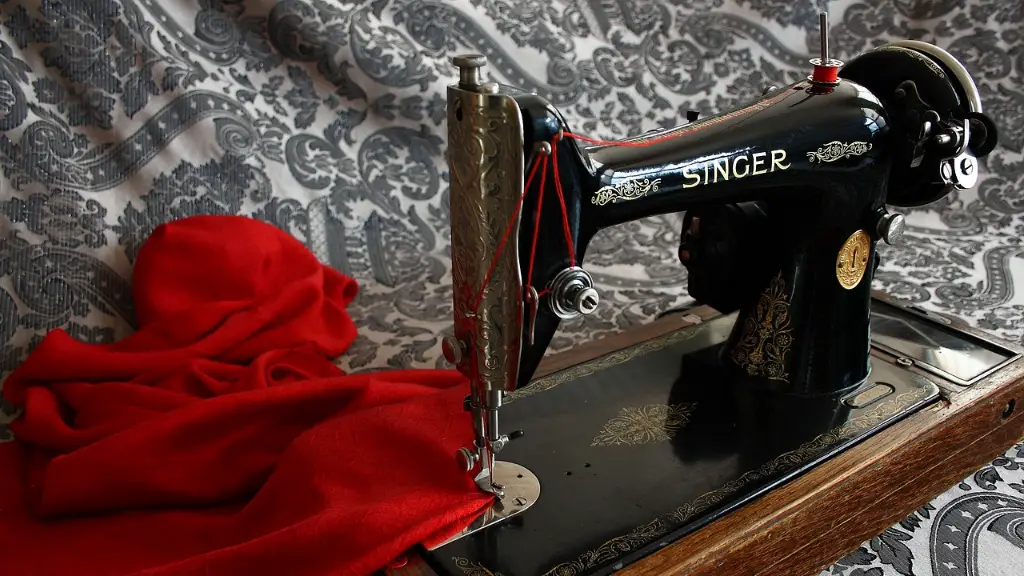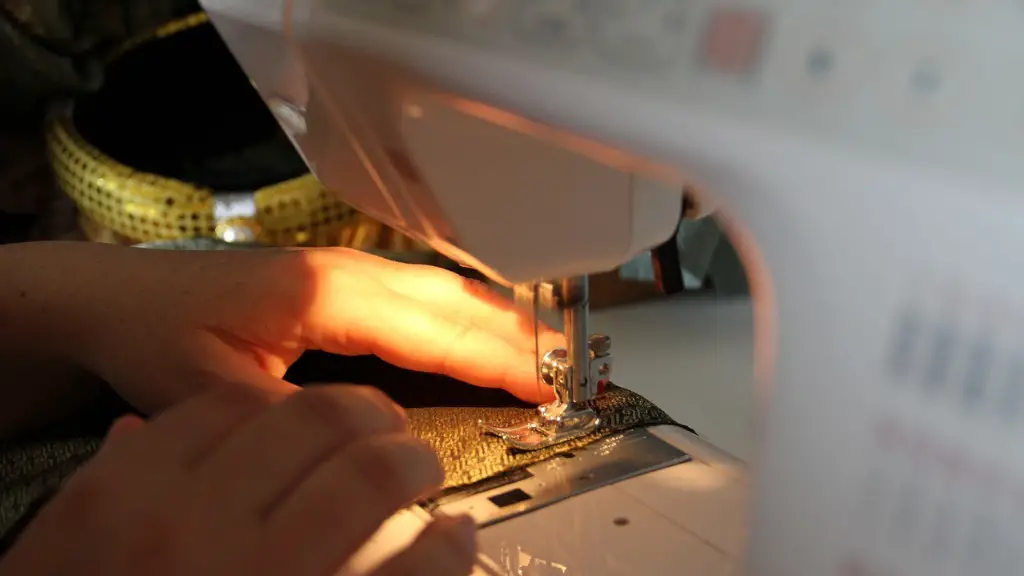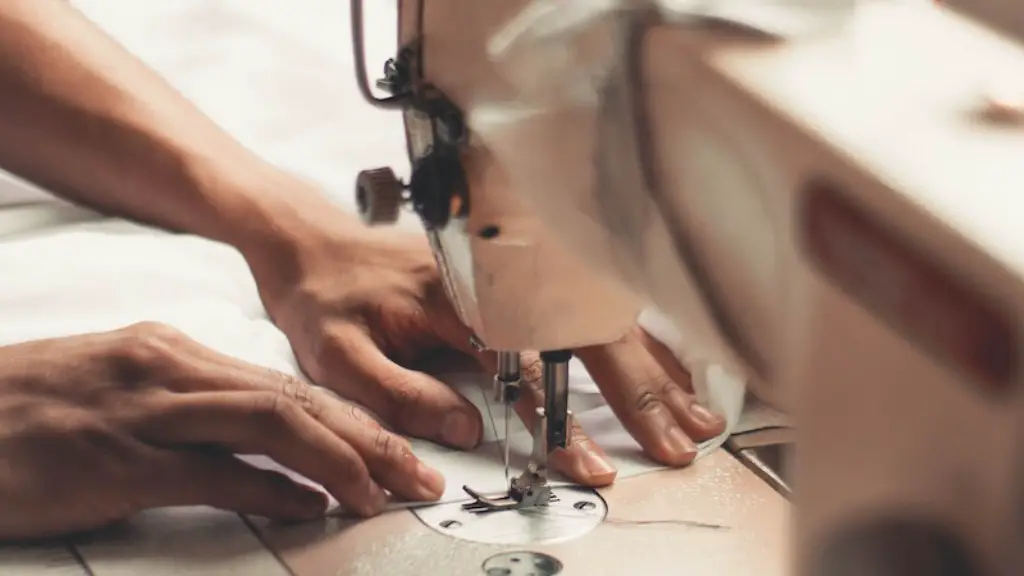Servo motors are essential components in a myriad of applications, from robotics to industrial production line automation. In the world of sewing machines, servo motors are essential to providing an array of user benefits, ranging from increased speed and control range to smaller form factors and lesser costs. Installing a servo motor on your sewing machine is a straightforward process that typically only involves the removal of two screws and the proper connection of the motor’s wires to a power source.
To start, turn off the power to the machine. Next, remove the two screws that hold the motor in place. You will then need to disconnect the old motor and connect the new servo motor. Connect the red or black wire to a source of power and the other wire to the machine frame. Take extra caution when connecting wires, as the wires in the motor can be fragile.
When you’re ready, turn on the power and check that the motor is working properly. Depending on the type of sewing machine you are using, you may have to adjust the needle and thread tension for your machine. Some machines may require tuning of the needle bar, hook and other components in order to obtain the best stitch quality.
Overall, installing a servo motor on your sewing machine is a relatively simple task. However, it’s important to be aware that different types of machines require different types of motors. Additionally, different types of motors also have different power requirements, so it’s best to consult the manufacturer for advice on which motor is best for your machine. An experienced service technician is also recommended to complete the installation, as a poorly installed servo motor can be hazardous to the safety of users.
Benefits of using Servo Motor
There are numerous benefits associated with using servo motors, such as improved motion control, greater torque, and faster start and stop times. Compared to traditional shaded-pole and induction motors, servo motors also provide increased accuracy, which is particularly beneficial when working with fabrics and delicate patterns. Using a servo motor on a sewing machine also means that users can achieve greater stitching speeds and smoother, more accurate stiches.
High-resolution servo motors, in particular, provide the most precise stitching patterns and even improve the quality of the fabric when stitching. Moreover, high-resolution servo motors are very efficient in terms of power consumption and have an exceptionally long service life, meaning users can potentially save considerable money in the long run.
In sum, the advantages of servo motors in the world of sewing machines are obvious. Whether you are stitching fine fabric, quilting, or embroidering, installing a servo motor on your machine is sure to drastically improve your performance.
Choosing the Right Motor
When it comes to choosing the right servo motor, the most important factor is the machine’s speed and torque requirements. For example, if the machine is going to be used for sewing heavy fabrics, then a motor with a higher speed would be required, whereas for lighter fabrics a motor with a low speed would be more suitable. Similarly, if the machine is going to be used for high-volume applications, then a motor with a higher torque would be necessary.
In addition to speed and torque, other factors, such as the number of cores, power source, type of encoder, and frame size should also be considered. Ultimately, the motor should be able to provide the speed, torque, and accuracy needed for each application.
It is important to keep in mind that motors will require periodic maintenance and may fail at some point. Therefore, users should always purchase a motor from a reputable supplier that offers a warranty. Additionally, it is always a good idea to purchase a servo motor with a few extra features such as: advanced software, built-in memory, and multi-axis control.
Final Preparations
Before installing the servo motor, make sure to properly inspect the machine and the space around it for any potential hazards. Additionally, it is recommended to have someone to assist you during the installation, as wiring and other components may be difficult to access when the motor is in place.
Once installed, the servo motor should be calibrated according to the manufacturer’s instructions. During this process, the motor should be tested for power, speed, and accuracy. If the motor finds any inconsistencies in the results, the calibration process should be repeated until the desired results are achieved.
Finally, it is important to remember that to ensure optimal performance and a long life, the servo motor must be properly maintained and serviced. This includes periodic oiling, cleaning and calibration of the machine, as well as other occasional maintenance tasks.
Potential Hazards
Despite the numerous benefits associated with using servo motors on sewing machines, it is important to be aware of the potential hazards that can arise when operating them. For instance, electric shock is a common concern, as servo motors require direct connection to a power source. Thus, it is recommended to ensure that the connections are secure and that all exposed wires are properly shielded.
In addition, loose or insufficiently tightened components can lead to the motor’s premature failure or malfunction. It is therefore recommended to periodically check the tightness of the motor’s components and to use proper tools when adjusting them.
Finally, unexpected motion or abrupt start-up and stop times can also put strain on the machine and cause damage. Therefore, it is important to adjust the motor’s speed and acceleration rate according to the manufacturer’s recommendations.
Safety Tips
The following tips can help ensure the safe operation of servo motors on sewing machines:
- Always consult the manufacturer’s instructions for proper installation and maintenance of the motor.
- Keep all connections and wires secure to prevent electric shock.
- Make sure the components are properly tightened.
- Avoid sudden start-up and stop times by properly adjusting the motor’s speed and acceleration rate.
- Periodically check and oil the motor to keep it in top condition.
- Ensure that all exposed wires are properly shielded.
Things to Consider
When it comes to installing a servo motor on your sewing machine, there are a few key points to consider. First and foremost, always refer to the manufacturer’s instructions to ensure the proper installation and maintenance of the motor. Also, remember to keep all connections and wires secure, and to check periodically for any signs of wear or damage.
It is also important to be aware of potential hazards and to take proper safety precautions. Additionally, make sure to constantly adjust the motor’s speed and acceleration rate according to the manufacturer’s recommendations and to periodically clean and oil the motor to keep it in top condition.
Overall, installing a servo motor on a sewing machine requires knowledge of the motor, the machine, and the potential hazards that can arise from improper installation and maintenance. By considering these key points and following necessary safety guidelines, users can enjoy the many benefits that come with using servo motors in the world of sewing machines.





